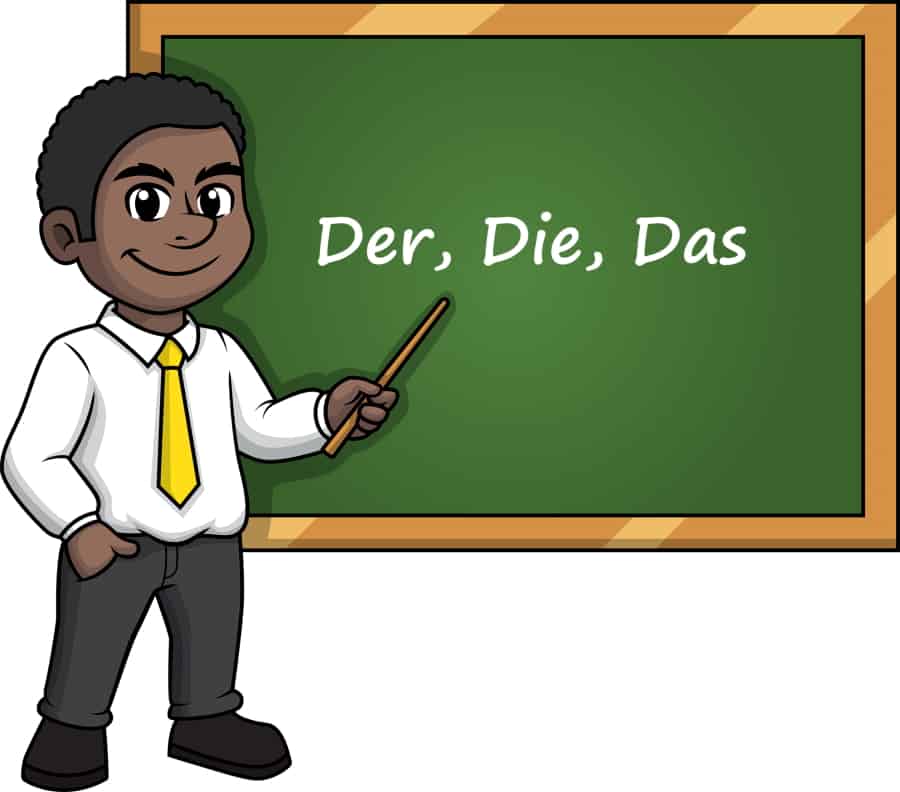
Teaching a second language to a child can be challenging, especially if the second language is not your mother tongue. But children have an amazing ability to pick up language, so it’s not as difficult as you might imagine.
Adopting teaching methods that have been developed in recent years, and taking a multi-faceted approach to teach children a second language proves to be most successful. Using native speakers, entertainment, and interactive practice, a child can learn a second language successfully.
Read on to learn more about the most effective ways to do this.
Contents
Teaching Children A Second Language Is Multifaceted
Teaching a second language to a child need not be stressful. There are plenty of ways to teach children in a fun, engaging manner that keeps them coming back for more.
Native Speakers Teach Best
The best way to learn a new language is by hanging out with people born to that language. Immersion in the culture is best because it teaches context as well as grammar.
Learning words and phrases can serve to embarrass you if you don’t understand how those words and phrases are used within the culture.
The quickest and easiest way to teach a child a second language is to immerse them in the culture of that language.
If there is someone close by who is a native speaker of the language your child is learning, let them spend time with your child speaking only in that language.
If you live near a neighborhood that is made up primarily of native speakers from the culture of the second language, taking your child on regular trips into that neighborhood can help them to absorb the language.
It’s amazing how much you can pick up just by listening. This can teach vernacular and syntax as well as the actual words.
Most languages have two versions:
- The formal version used for official communication
- The slang version (also known as ‘conversational’ language) in everyday communication between friends
To be fluent in a language, one must know both versions. Only a native speaker can teach both versions effectively.
Language Classes Teach Comprehensively

The second best way to teach your child a second language is to enroll them in a special language class.
These classes are designed to teach them the language to a level of fluency. Your child will learn:
- Grammar
- Syntax
- Pronunciation
- Usage
- Context
- Frequently Used Vocabulary
These classes can teach your child to write correctly in the second language as well as speaking it fluently.
Often, it’s harder to write properly in a second language than it is to speak it. Enrolling your child in a language class can give them the tools needed to be fluent both in written and spoken language.
Always be sure that the class is designed for your child’s developmental level. You don’t want your kindergartener in a class meant for third graders; it will be too difficult for him or her.
Lessons that are too hard or too long can discourage your child from wanting to learn a new language.
Be sure that you choose a class meant for her age group and that teaches in a way to fire her interest so that she is excited to learn a second language.
How ever you package it, learning a new language is hard at times, so it needs to be made as fun as possible.
It needs to be taught on a level the child can understand within a time frame appropriate for the length of his attention span. It might surprise you that as a former public school teacher, I never had lessons longer than 15 minutes for older kids, and it was even shorter for kids in K-2 grades.
Our instructional motto: Keep lessons short and provide plenty of opportunity for kids to apply what they’re learning.
No lesson is effective if the student is distracted. So, especially for young or very active children, the lessons need to be short enough to keep them engaged.
Ideally, a multifaceted approach would be used so that it’s not all dry oral instruction. Hopefully, there would be age-appropriate activities that would both keep the child interested and reinforce what was taught by instruction.
Learning Is All Fun And Games
Especially for young children, games and interactive toys may be a quite effective way to learn a second language.
Children learn subconsciously in the earliest years, so allowing them to play with games and toys that place the two languages side by side can instill an almost instinctive understanding of the second language. For example, this bilingual product by LeapFrog is a very popular option found at Amazon.
Children will subconsciously learn to find similarities between their mother tongue and the second language, which will make it easier for them to absorb.
There are many interactive computer programs to help with this as well.
Bilingual Movies And Cartoons Can Help
As the long-term benefits of learning as second language have become more apparent, movie producers and cartoon writers have begun incorporating bilingual characters into their scripts.
This can be an easy way to give your child a start in learning a second language.
It’s fun and entertaining, so it doesn’t “feel” like learning. Cartoons such as Dora The Explorer can help your child learn the basics of speaking a second language.
These will by no means replace comprehensive instruction since the context is just too limited to teach more than a few words or phrases, but it can be a start for toddlers and preschoolers.
Bilingual movies may have an advantage of more content, so there is room for greater usage of second languages than is possible in cartoons.
Depending on how the second language is presented, these may be more suitable for school-age children. If the second language is translated by the subtitle, the child would need the ability to read in order to understand what was being said.
There are also plenty of interactive computer programs that can give your child a start in learning a second language.
These programs will likely teach the formal version of the language, so your child will still need further instruction to understand the common version that is used in everyday conversation.
Bilingual Books Are An Excellent Resource
Bilingual books are an excellent way to teach your bookworm child a new language. These books usually have the new language alongside the child’s native language, so it’s easy for them to understand how the words correspond to each other.
Books will come nearer teaching the everyday conversational version of the language since most children’s books are written in an informal, conversational tone.
When teaching our daughter a second language, we started out with preschool-type picture books such as this version found at Amazon. Then as she became more fluent, and older, she was able to read the Harry Potter series in the second language.
The only downside to this is that books cannot teach proper pronunciation. If your child is not hearing the language in addition to reading it, he or she will not learn to pronounce the words as they should be pronounced.
Most languages have special nuances like a trill of the R’s or other special effects that are inherent to the way the language is spoken.
These nuances cannot be learned from a book alone. This will require instruction from either a native speaker or someone who speaks the second language fluently.
Books can even be used with small children if there is someone fluent in both languages to read the books to them. And of course, getting the audio version to go along with the printed text would also help.
In this way, they will learn both grammar and pronunciation.
Music In The Second Language Teaches Culture
Music is a powerful teacher. Lessons set to music will stick much longer than lessons given in a traditional lecture mode.
Letting your child listen to music produced in the second language can have a powerful impact on their ability to retain what they have learned.
It will also further reveal the informal usage of the language since music usually isn’t written in formal language.
Music can help the child learn how ideas relate to each other in the new language and enhance their ability to express themselves in that language.
It may also teach them something of the culture behind the language, which will help them to better understand friends who are a part of that culture.
Practice With Your Child At Home

Even with excellent classes or the instruction of a native speaker, nothing replaces your involvement as a parent. Your child is more likely to be excited about learning a second language if you show an interest in sharing the experience with him.
Children naturally want to show off to their parents what they have learned, and they need their parents to be interested in their advancements.
Even if you are not a native or fluent speaker of the second language, you can reinforce what your child is learning by practicing with them at home.
Help them learn to apply their knowledge practically. You can do this by encouraging them to incorporate the second language into common conversation.
You don’t have to insist that every waking moment at home is spent speaking the new language, but for an hour or so every day, communicate with them in the second language.
You can label household items with the corresponding word from the language your child is learning. You can certainly make your own, but it’s quite inexpensive and very convenient to use ready-made labels like these found at Amazon.
You can make requests or give commands in the second language and encourage your child to do the same.
Play games with them where the new language is used exclusively. This will help them to learn how to use the language in everyday conversation.
Depending on where you live and the second language, you might be able to help your child practice by outings to stores or restaurants where native speakers might be. This ‘real world’ practice can be invaluable for your child’s (and your) learning experience.
If they are experiencing particular difficulty mastering any part of the language, this can help them to understand more clearly.
Studies have shown that children are able to compartmentalize languages, so the chance of them getting confused between the two languages is slim.
An Early Start Yields Best Results

When should you start your child learning a second language? As early as possible.
From birth to three years old, a child’s brain is the most flexible. This makes it easier for them to absorb a second language.
Adults who try to learn a new language often experience confusion and difficulty because there is so much they have to re-learn. Children don’t have as much to unlearn, so it is easier for them to process two languages at once.
They have an uncanny ability to recognize a change in language, which gives them a significant head start on learning a second language.
Children also are much more uninhibited than adults when trying something new. They aren’t as afraid to ‘sound silly’ or make a mistake, making it a better time to become bilingual or multilingual than later in life.
Bilingual Benefits Last A Lifetime
Children who learn two languages early in life have been shown to have unique abilities in several areas. In general, bilingual children are shown to be:
- Better problem-solvers
- More focused
- More culturally aware
These skills help children to be more successful in life, especially in today’s world where bilingualism is almost a necessity.
Bilingual Children Grow Up To Be Problem-Solvers
Because speaking two languages requires conscious thought, bilingual children become adept at finding solutions to problems.
Every time they speak, their brains are exercised in a way that monolingual children’s brains are not. They must decide which language they will speak.
This decision must be made based on:
- The setting
- The audience
A bilingual child must assess the setting to decide which language is appropriate. While either language is acceptable at home, his teachers may wish him to speak in only one at school.
He also must consider whether the person to whom he is speaking can understand both languages.
For example, his parents may be fluent in both languages, but perhaps his grandparents speak only their native language. Or perhaps his friends at school speak only his second language.
The bilingual child must choose which language is most likely to be understood by the person to whom he is talking.
This struggle of languages for ascendancy forces him to analyze his surroundings and make the best possible choice.
As a teacher, I’ve often seen my English Learner students work as a translator in order to express his parents concerns or questions. It’s remarkable to watch the child navigate between the home and school languages in this way.
The skill of analytical thinking will stand him or her in good stead over and over again in life.
Bilingual Children Are More Focused Than Monolingual Children
Along with analytical thinking, he must learn to focus on whichever language he chooses to communicate. He learns to suppress the language that is not needed at the moment and give full attention to the necessary language.
This teaches him to be “in the moment” instead of operating on autopilot. He must think. He becomes proficient at singling out what is most important and focusing on that.
She is not so easily distracted by irrelevant information as monolingual children often are. The bilingual child can compartmentalize. Important information is separated from detail with unusual speed and accuracy.
This teaches her to quickly “get to the bottom” of things instead of getting sidetracked with frivolous detail.
Bilingual Children Understand Other Cultures Better
Since learning a second language requires also learning something of the culture behind it, bilingual children are often more culturally aware than monolingual children.

They learn to think from more than one perspective. This makes them more accepting of other people who may be different from them.
They learn to see things through the other person’s eyes and to be flexible while respecting other people’s traditions.
Bilingual children are usually more tolerant of different views, and they are excellent at coming up with solutions that are acceptable to opposing parties. Because they understand the way both sides think, they are better equipped to find common ground between the two viewpoints.
This makes them unparalleled negotiators.
Don’t Sweat The Small Stuff
Children are always learning new things, and they like to experiment. So, when they are proficient at two languages, there may be some developments that concern parents, such as:
- Mixing the two languages
- Preferring one language over the other
These developments usually are not a cause for concern. They are normal components of the child exploring his world.
Mixing Languages Is Normal
Many times I’ve witnessed my students responding to their parents in English even though their parents asked them the question in their home language.
Often bilingual children will mix the two languages in conversation. Parents sometimes worry that their child is getting confused between the languages.
Not so. Children have an uncanny ability to sort out languages from each other. The reasons that they mix languages can include:
- Not knowing a specific word in one of the languages
- Feeling a greater depth of expression in one language
- Freedom to use either in a bilingual setting
If children are exposed to one language more than the other, they may not know every word they need in both languages.
For example, they may speak both English and German at home, but only English at school. They may not know the German words for notebook, pen, etc.
So, in conversation with their German-speaking parents, they may revert to English for these words. This doesn’t mean that they are confused about which language is which.
They simply know more English words than German words.
Another reason they may mix languages, especially as they get older, may be because one language expresses their feelings better than the other.
They may resort to their mother tongue to express depth of felling because it just says it better.
In a bilingual home, a child may feel free to use both languages interchangeably since everyone in the household understands both languages.
And if she can, why not? It’s fun!
Preferring One Language Is No Cause For Concern
At times, children will display a preference for one language over another. Often, children who learn English as a second language will speak English more than they speak their native language.
Again, this does not need to cause concern. Children naturally gravitate toward what feels most comfortable to them.
So, if all their friends speak a language different from their native tongue, they may speak the second language most to be like all their friends.
One language may be more useful to them if most of the people they interact with primarily speak that language. It is not likely that they will forget or abandon the other language; they may just not have as much reason to use it.
You can help keep them sharp on both languages by making sure they frequently interact with people who speak only the other language. This will require them to speak the less-used language to communicate.
Bilingual Children Have Significant Advantages
In today’s world, where so many languages occupy the same space, a bilingual person is an invaluable asset.
Bilingual children can grow up to be valuable employees in settings where monolinguistic people often need a translator.
Particularly in the medical field, there is always a huge need for bilingual people. Teaching your child a second language can give them a helpful boost toward filling an important place in society.
The Final Talking Point on How To Teach A Second Language To A Child
Remember teaching a second language is multifaceted. It helps to use games, play, books, music, and lots of interactive practice like conversing with native speakers.
It’s not easy and will have its challenges, but anything worth doing does, right? So don’t be afraid! Teaching your child a second language is a wonderful opportunity you can provide for your child, her future, and you!
